With the Mississippi River 10ft out of its banks and heading towards a crest (peak) of 48ft on the Memphis gauge, county planners and emergency management officials fear that flood waters will enter nearly all the now-abandoned homes on the unprotected side of the levee.
On the bloated Mississippi River, the town of Tunica Cutoff, sits an hour's drive south of Memphis - recent flood waters have done significant damage to the town's housing and has left residents wondering if they'll have a community to return to when the water recedes.
CBS News reports that there are about 300 homes in the small town, and they have all been flooded.
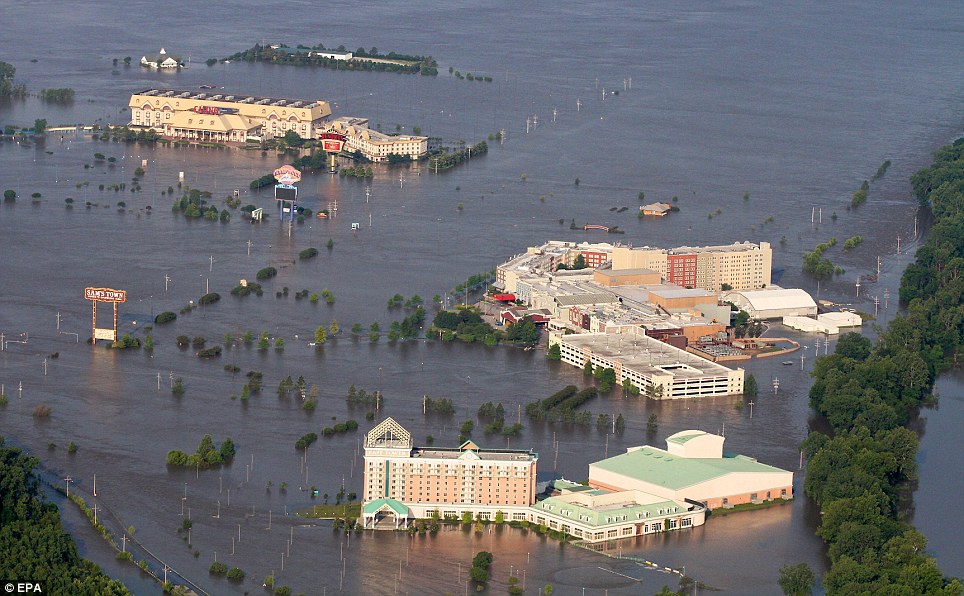

Tunica County, which contains the unincorporated Tunica Cutoff community, has little more than 10,000 residents, and a median family income of around $30,000, about half the U.S. national average, according to Census estimates.
It is also about 70 per cent black, whereas the national average is around 12 per cent.
Most victims in the Mississippi town have no flood insurance and couldn't afford raising their homes so there's an strong feeling within the displaced community that the town could be lost for good.
Lee Sherwin, 77, who fled Tunica Cutoff and is currently living in a Red Cross shelter, said: 'We don't know from day to day.
'We don't know if we are going to want to go back or even if we can go back. I've never in my life run into a situation like this, but we are living with it day by day.'
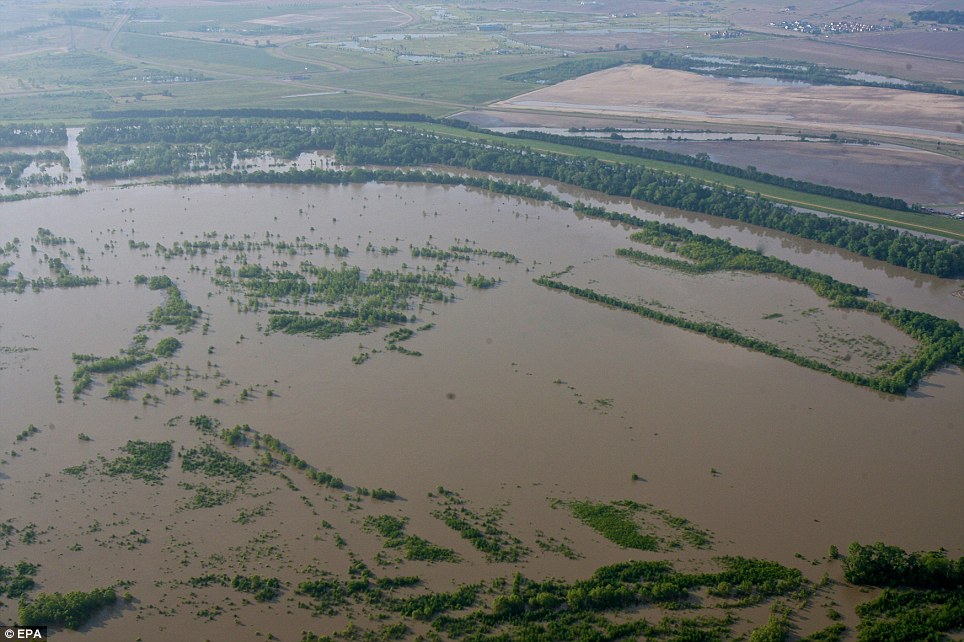
However, now that there has been massive flooding, the law states that if any of the 357 homes are "substantially damaged," they must be rebuilt under current flood guidelines, or they cannot be reoccupied.
"Substantially damaged" means that the cost of repairs would equal 50% or more of the value of the home. If that is the case, the homes would have to be rebuilt at least ten feet higher to meet current flood guidelines, or not rebuilt at all.
'The law doesn't say that they can't go back, it just says they have to elevate the home. But, we recognize that elevating those homes is a pretty expensive process,' Tunica County Planner Pepper Bradford said.
'Nobody there has that kind of money. Very few people do,' said Rex Still, a Tunica Cutoff resident.
According to Tunica County leaders, the state must come and inspect the water-logged properties to determine the amount of damage to each one. That cannot be done until the water levels go down, which means residents could be waiting weeks or a month before finding out about their homes.
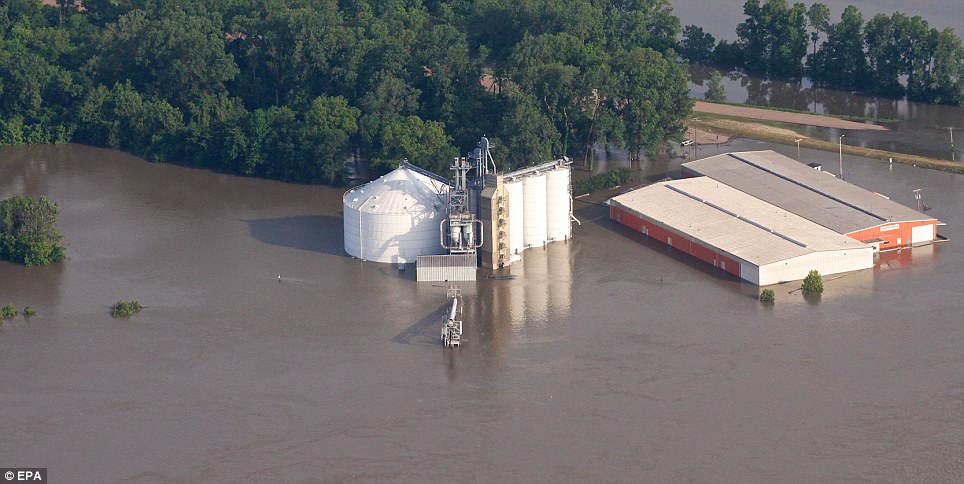
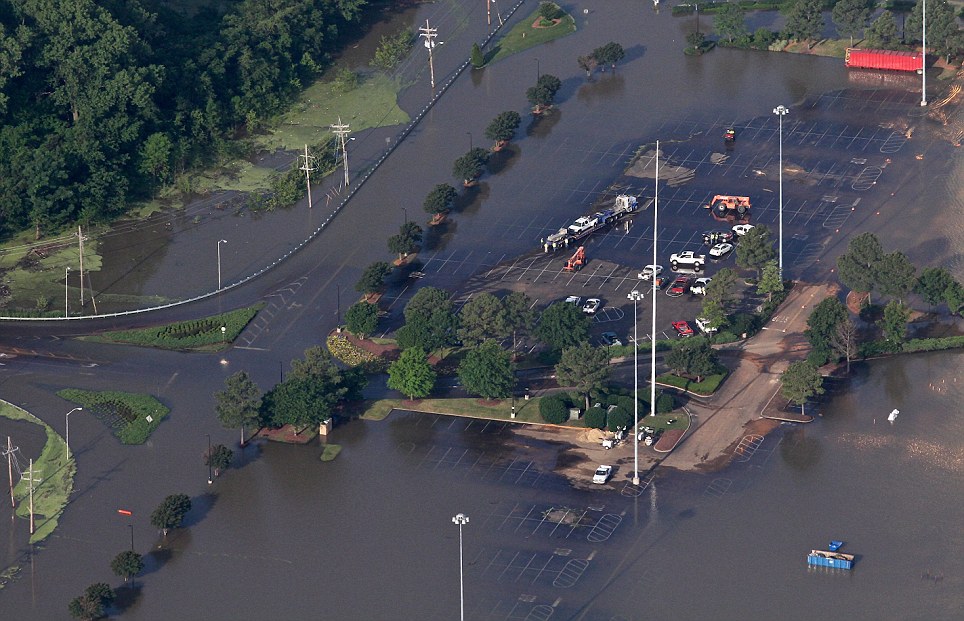
On Tuesday this week, nearly 200 Tunica Cutoff residents filled a civic centre in Tunica city demanding answers from officials on whether or not they would ever be allowed home.
Megan Bollet was one of the frustrated residents who showed up with questions.
Bollet, 27, lives in Tunica with husband Henry Clay Looney and four-year-old son Rylan. The family left almost three weeks ago and has been "living on the floor" of her sister-in-law's house.
She said: 'It's been very stressful. I'm going to nursing school and am trying to take exams. My son doesn't know what to do; he just wants to go home, and I don't know how to explain it to him.'
Pepper Bradford told residents that those 'whose homes are determined to be substantially damaged will have to comply with current elevated building codes if or when they are rebuilt, but residents will be allowed to return if they comply.'
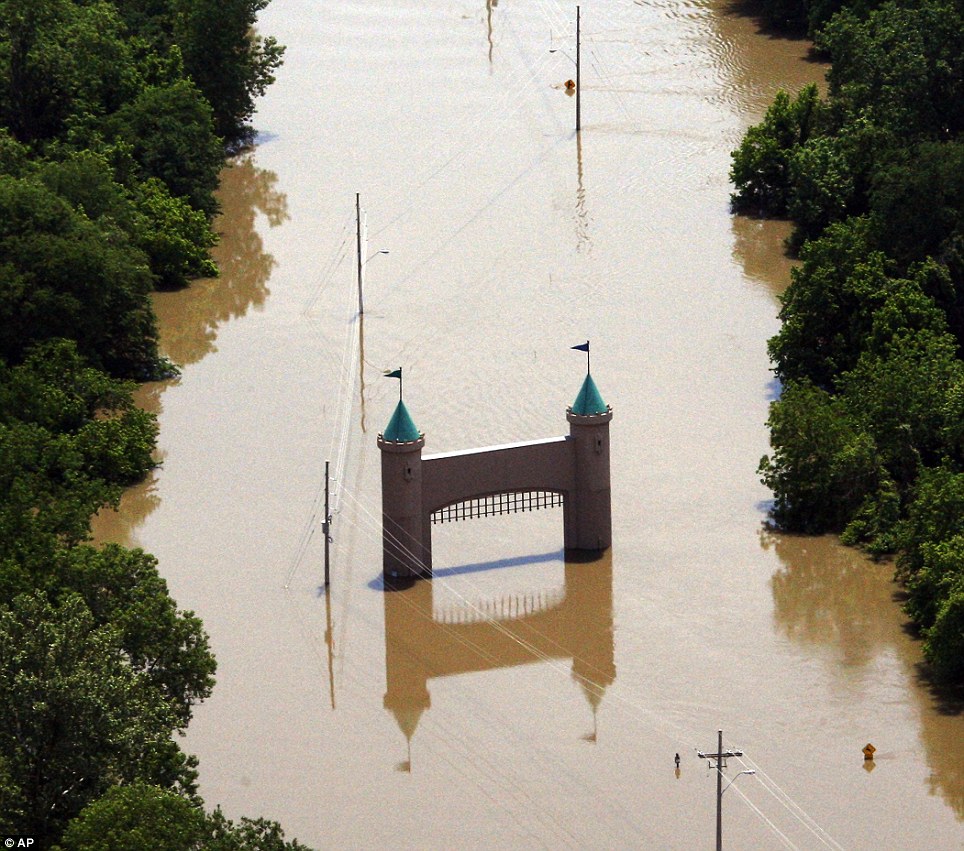
He told the news outlet: 'There's no sewage hookup. You go in a barn to take a shower. We have no time frame on how long we can stay.
'Cutoff is a community where everybody lives from paycheck to paycheck. It's also a community where everybody sticks together.'
So far this year the Mississippi river has stretched nearly 3 miles (5 km) wide, six times its usual girth and, this week, began to crest at 48ft (14.6m) - beating the Great Flood of 1927 which reached 45.9ft (14m), but still below the river's all-time high of 48.7ft (14.8m) in 1937.
In the decades since the deadly floods of 1927 and 1937, which claimed hundreds of lives, America's Army Corps of Engineers has spent $13billion shoring up the levees along the Mississippi and creating an intricate system of flood walls and overflow basins.
The plan has worked: despite the fact that the population along the Mississippi's banks has doubled to 4 million people in the past 80 years, the flood of 2011 has yet to claim any lives in Tennessee and has left Memphis relatively intact, making the river's crest more of a curiosity than an emergency for Memphis' million residents.
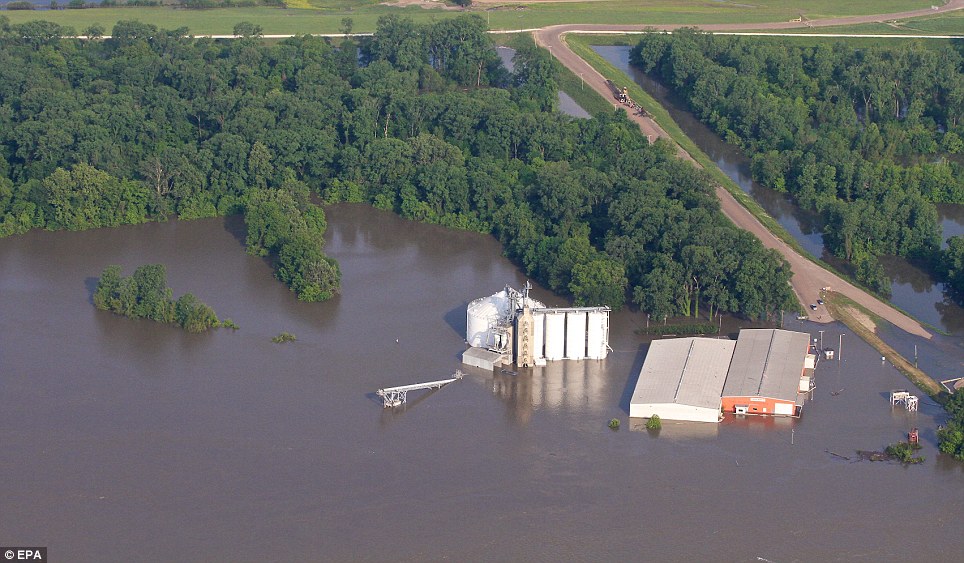
Already some economists are warning that this year's spring floods are likely to cause damage worth between $2bn and $4bn.
'Crop loss estimates are definitely around $800m for Mississippi alone,' said John Michael Riley, an economics professor at Mississippi State University.
The Great Flood of 1927 was estimated have cost the US about $230m, the equivalent of $2.8bn today.
As many as 13,000 buildings, 25,000 people and 3 million acres of land are likely to be impacted, the authorities said.
And much of the cost will be footed by the Government, with the use of insurance policies severely lacking in many of the communities in America's south.
Nine of the 11 counties that touch the Mississippi River in the state have poverty rates at least double the national average of 13.5 per cent, according to the US Census Bureau.
In fact, the U.S. has suffered five billion dollars in weather related damage in 2011 so far - the highest ever recorded for a half year.
Tornadoes, blizzards, floods and storms have inflicted record costs because of their severity and their location - hitting populous areas such as Memphis, Tennessee, Raleigh, North Carolina, and Tuscaloosa, Alabama.
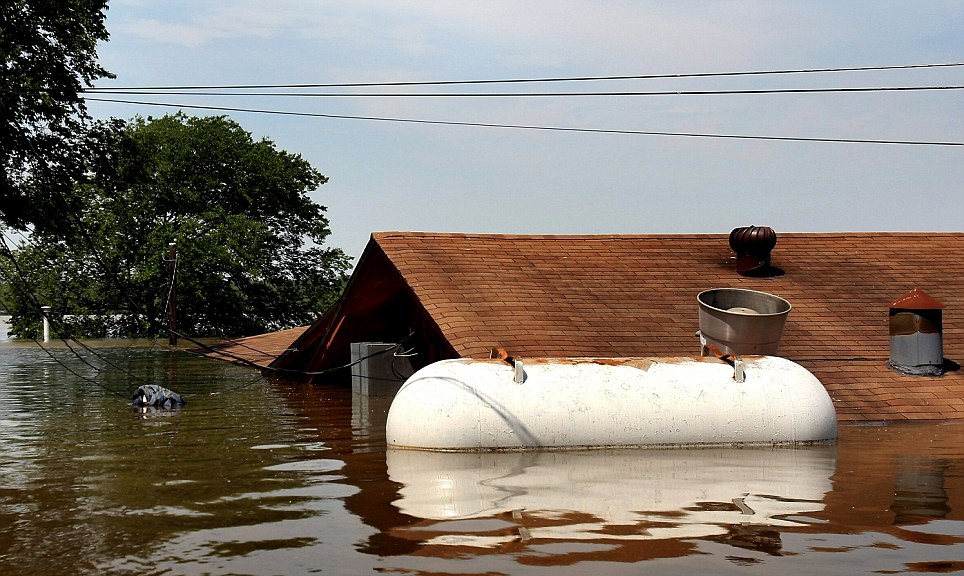



Reader Comments
to our Newsletter